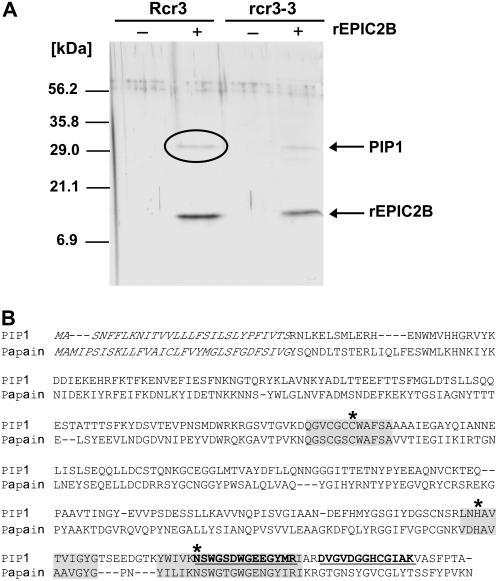Figure 4.
EPIC2B interacts with PIP1, a tomato Cys protease of the C1A papain family. A, Coimmunoprecipitation of rEPIC2B and PIP1 using FLAG antisera. Eluates from coimmunoprecipitation of rEPIC2B with proteins in intercellular fluids from Rcr3pim and rcr3-3 (a premature termination mutant of Rcr3pim) tomato were run on SDS-PAGE gel, followed by staining with silver nitrate. Rcr3 or rcr3-3 indicates whether the intercellular fluids were obtained from Rcr3pim or rcr3-3 plants. rEPIC2B indicates whether or not rEPIC2B was added to the reaction mix. The band indicated by a circle was cored from a replicate gel stained with Colloidal Coomassie Blue, used in tandem mass spectrometry, and identified as the papain-like Cys protease PIP1. The size in kD of the molecular mass markers is shown on the left. B, Sequence alignment of PIP1 with papain of papaya (Carica papaya; GenBank gi:67642), the type member of C1A Cys proteases. The predicted signal peptide sequences are shown in italics. The two peptides of PIP1 sequenced by tandem mass spectrometry are underlined in bold. The conserved protease catalytic triad residues (C154, H287, and N309) predicted based on the consensus patterns of eukaryotic thiol (Cys) protease active sites (PROSITE: PDOC00126) are shown by asterisks. The conserved sequences around catalytic residues are shaded.

